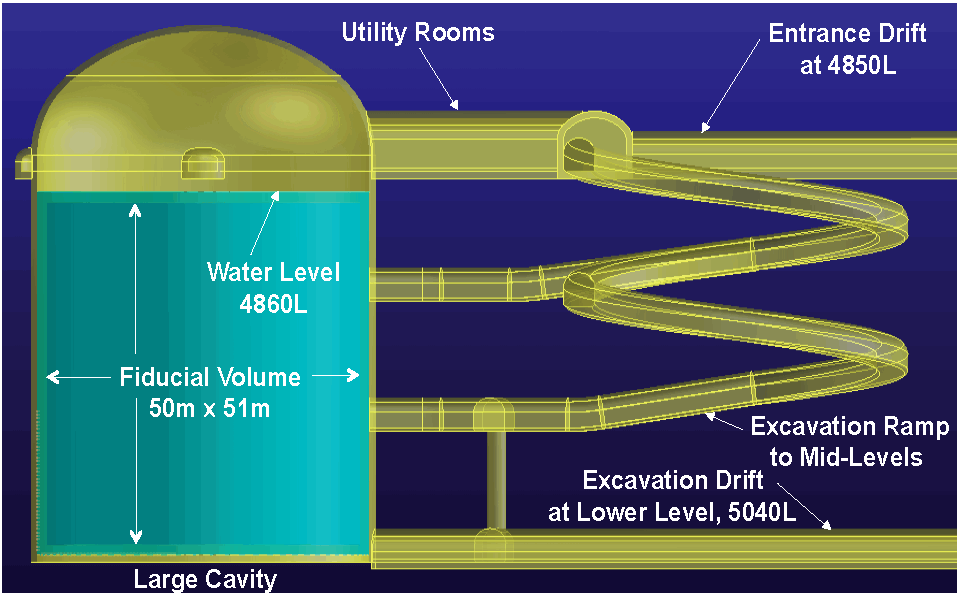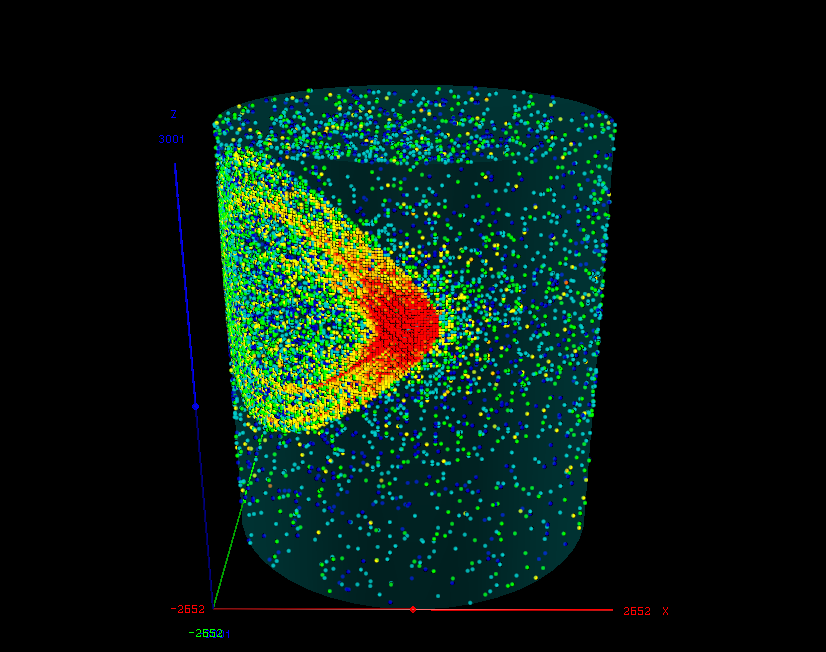Cambridge LBNE Group
Introduction
The Long Baseline Neutrino Experiment (LBNE) is a new high energy physics project, currently in its design phase. The experiment will combine the world's most intense long-distance neutrino beam and world's largest particle detector to reach unprecedented sensitivity and precision in measuring quantum mechanical mixing in the neutrino sector. The hope is to observe CP violation in neutrinos, which could help to explain the matter/antimatter asymmetry we see in the universe today.
The LBNE Experiment
The neutrino beam will be constructed at the Fermi National Accelerator Laboratory, near Chicago. A powerful beam of protons from the Fermilab Main Injector accelerator will be collided with a fixed target to generate an intense beam of muon neutrinos. The neutrinos will travel more than a thousand kilometres through the earth to a massive underground particle detector, which could be located in the proposed Deep Underground Science and Engineering Laboratory (DUSEL) at the Homestake mine in South Dakota. The detector will be more than 10 times the size of the largest LHC detector, and will also be used to study solar and atmospheric neutrinos, and perform searches for proton decay and neutrinos from supernovae and other astrophysical sources.
The LBNE collaboration is pursuing two possible detector options: the Water Cherenkov technology, currently used by the Super-Kamiokande neutrino experiment, and also a liquid-argon time projection chamber. The Cambridge group is involved in the Water Cherenkov option, developing software to simulate and reconstruct neutrino interactions in the detector, and optimize the physics capabilities of the detector.


